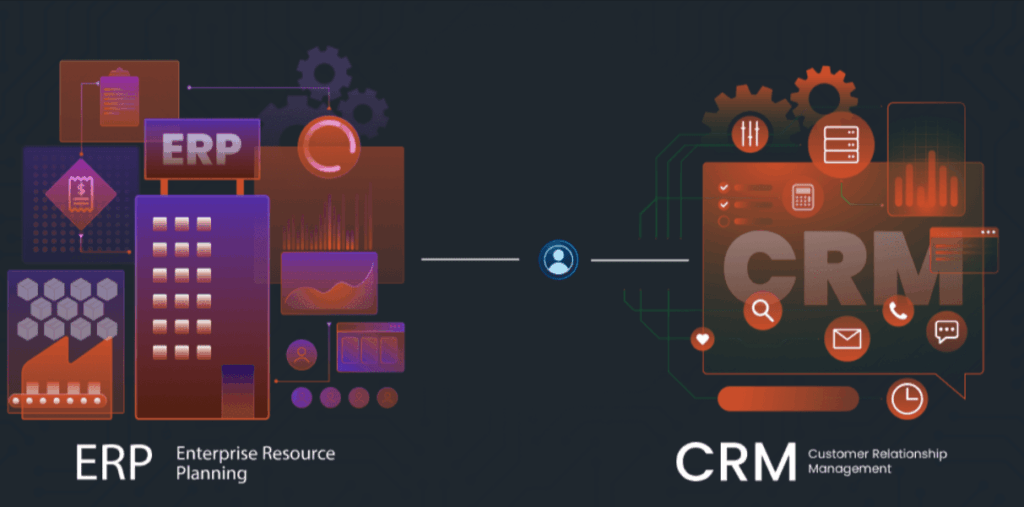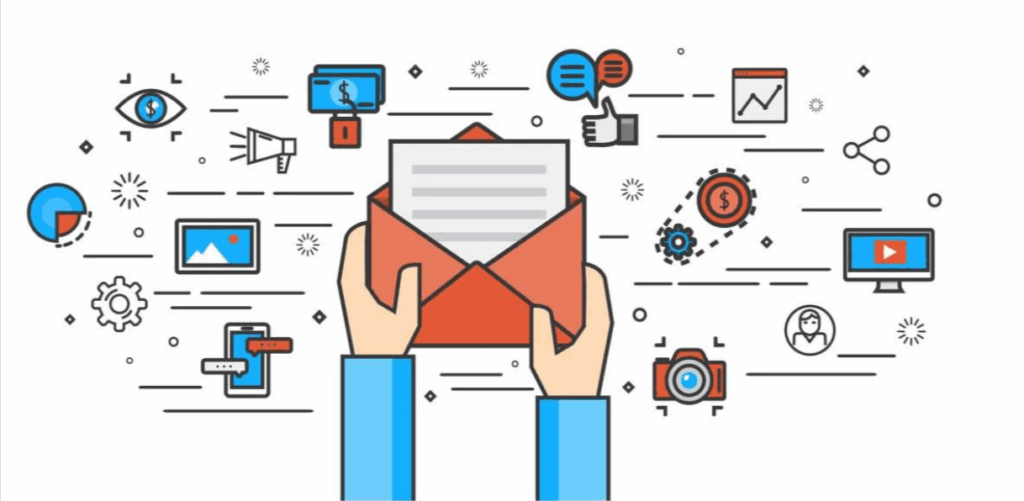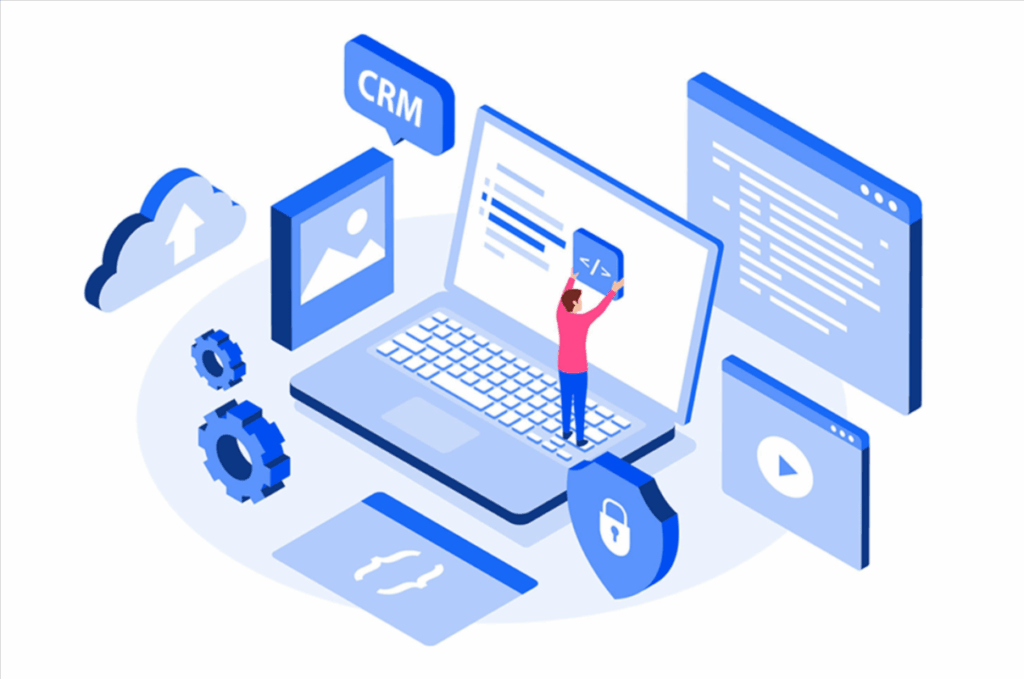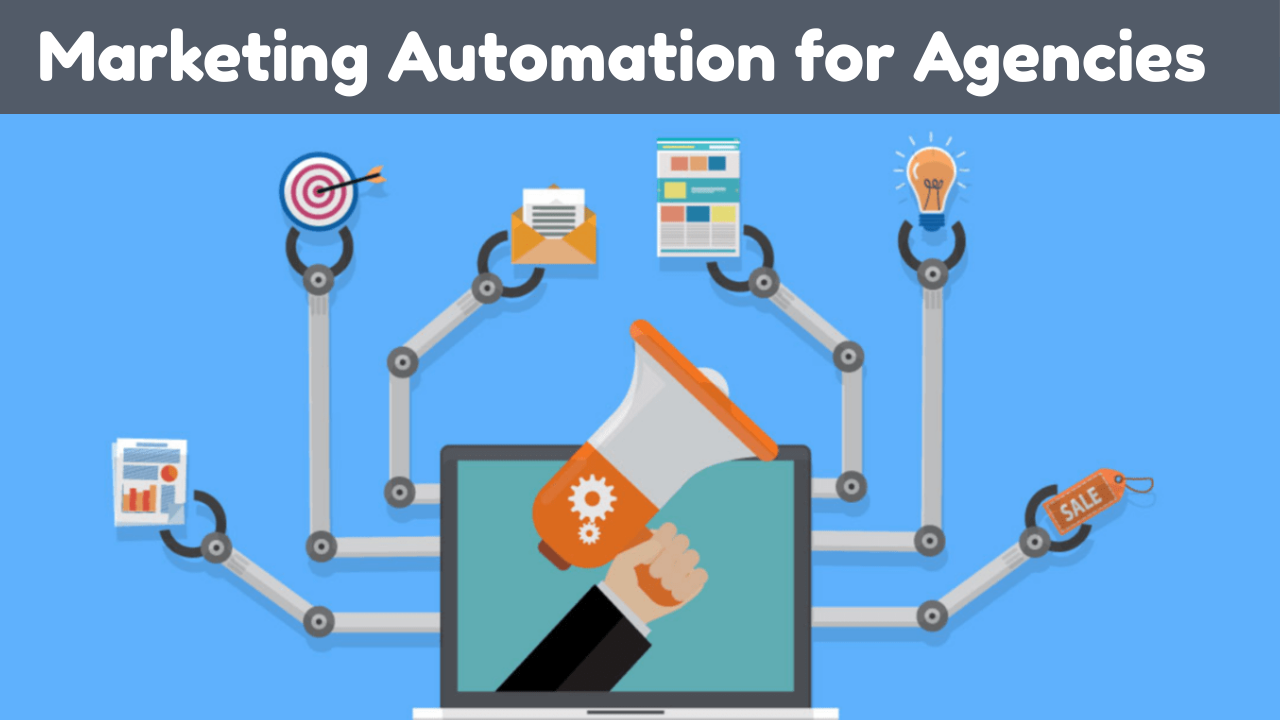Marketing automation comes into being as a weapon for agencies to manage numerous campaigns efficiently, thus providing a better client outcome. By disclaiming common mundane tasks such as email follow-ups, lead nurturing, or scheduling posts online, agencies save time; minimize human errors and provide more brain energy for ideation and strategizing.
Increased efficiency and client ROI are generated by automation, which dispatches apt campaigns with the apt message for the apt audience at the apt time. These campaigns henceforth cement agencies’ value in front of their clients by being consistent, scalable, and measurable.
In this Complete Guide, we break the marketing automation process for agencies, including email automation, lead scoring, CRM integrations, social media scheduling, behavioral triggers, content personalization, etc.
Why Marketing Automation is Important for Agencies
Such marketing automation is efficiency, consistency, and measurable results for agencies. Here is the deal why it is essential:
- Save time and reduce manual work : Repetitive tasks such as sending emails, following up, and generating reports can be automated, letting the team focus on strategy and creative work, with fewer errors during execution.
- Works across numerous clients and campaigns : Managing campaigns across dozens can be handled by agencies without forgetting time-sensitive communication that must be customized with content for each client.
- Creates measurable outcomes and leads to client satisfaction : Transparent tracking of KPIs such as engagement, conversion, and ROI allows agencies to retain their clients’ trust and present them with data-driven reports to prove the value created on their behalf.
- Maintain consistency across campaigns : In terms of automation, the messaging, branding, and content delivery protocols shall be followed so their Strand logo for a client’s credibility and professionalism shall remain stronger.
- Supports marketing at scale with its stand on personalization : Being segmented into mini-groups with behavior-based triggers allows an agency to send content relevant to each user with no manual effort applied.
- Making better decisions: With assistance from its automation tools, agencies can collect statistics and insights that fine-tune a strategy, optimize an ongoing campaign, and put focus on tactics that deliver results.
Core Components of Marketing Automation
Marketing Automation does not cover just scheduling an email or posting on-line. It consists of several interconnected components working in unison to promote a campaign, engage the customer, and realize revenue. Having a clear understanding of those core elements can aid an agency in implementing automation.
1. Leadring and Nurturance
Leads get generated for an agency by automation, comprising forms, landing pages, and gated content. Once a lead is captured, it is nurtured further by bots via personalized messages, follow-ups, and relevant content so that the opportunity continues to move down the funnel into the closing phase. All this happens without any manual intervention.
2. Email Marketing Automation
Nowadays, email still remains a great communication channel, and with automation software to send the sequence, whether an onboarding sequence for lead capture, drip campaign, or re-engagement flows, it makes sure the messages go out at precisely the right time. For agencies, this way of automation allows sending messages to a user that is supposed to hear it at exactly the right moment in order to foster engagement and conversions.
3. CRM Integrations with Client Data Management

Lastly, with this automation out of the way, the implementations of CRM for client and lead data keep a perfect and orderly record of interactions with prospective and existing clients, while various tasks can be managed. Agencies can assign leads automatically, send follow-up reminders, and be a supportive database for both sales and marketing.
4. Automatic Analyzing and Report Generation
Automated reporting tools collect data for campaigns, e-mail sequences, social media, and website activity. An agency can churn out a performance report with just a few clicks, keep an eye on their KPIs, glean knowledge to increase optimization of strategies, all without having to deal with the menial task of compiling data.
Setting Up a Marketing Automation Strategy
Good automation comes with its pattern! Agencies must set their goals and outline their audience, getting their hands on useful tools to make sure the campaigns they design are working and wins from being built.
1. Setting Goals and KPIs for the Agency
So what is it we want to accomplish with automation? Generate leads, retain clients, improve campaign efficiency? Come up with clear-measurable KPIs that may include open rates, conversion rates, ROI, or some other metrics by which you will ever measure success. So defined, goals will keep the strategy sharply focused on its targeted results.
2. Mapping Customer Journeys and Touchpoints
Prospects of your clients become subjected to various stages from inceptive perspectives up to being among the purchases. Touchpoints are mapped, and hence interactions pertinent to those stages are automated; therefore, creating smooth touch experiences on the platforms of e-mails, social media, a website, and more.
3. Segmenting Audiences For Personalized Messaging
Split leads and clients into segments depending on their behavior, demographics, or purchase intent. Personalized messaging guarantees the actual delivery of content for the respective groups to be relevant to them, therefore moving them to clog up and conversion without any manual intervention.
4. The Right Way to Select Tools for Your Agency
The automation tools should be selected according to your agency’s size, clients, and working style. Platforms working for e-mail automation, CRM integration, analytics, and reporting should be sought. With the right tools, you can get things done swiftly, allowing you to gear up for actual campaigns and track results with huge ease.
Successful Marketing Automation Strategies
So marketing automation does not mean saving time, but rather it is composing different messages for different people across time while for automation of campaigns on the widest scale.In some ways, these methods might assist agencies as fronts are set up to work in concert for clients to maximize engagement, conversion, and satisfaction.
1. Email Automation: Drip Campaigns, Onboarding Sequences, Re-Engagement Flows

Email automation is one of the best ways to nurture leads and keep them engaged.
Drip campaign : A series of automated emails sent after a time interval to educate, engage, or nurture a prospect. For instance, the software company would send emails detailing the features, conducting tutorials, and trying to get the prospect to enter for a free trial. Drip campaign builds trust with the prospect, keeping your brand at top-of-mind, without forcing you to do manual follow-ups.
Onboarding sequences : Automated and well-defined processes that walk new subscribers or clients on a predetermined journey. So, when a client signs up with an agency, step-by-step instructions and introductory material, or even personalized tips relevant to their needs, can be sent automatically. This way, almost nothing comes between a user and your product-and hence adoption wins-if not speed and specification altogether.
Re-engagement Flows : Even when some time passes, the user remains inactive, then it is a peculiar communication-occasionally discount offers, sometimes tips, or maybe surveys-to lure them back to visiting. This limits churn and ensures every lead or client is coaxed into a lifetime value conversion.
2. Lead Scoring and Segmentation: Lead Prioritization on Engagement and Intent.
Not every lead converts readily into an opportunity. An automation-based application, in service to agencies, does assist them with concentration on prospects with a high likelihood of conversion while ensuring delivery of content pertinent to each segment of the audience.
Lead scoring : An action is assigned a score depending on given criteria: be it opening an email, clicking a link, or just visiting the product pages or downloading resources. Higher score means stronger intention to buy, or maybe stronger interest on those leads; hence, these leads need to be aggressively worked on by the sales team, which brings forth two different treatments for two leads. For instance, a highly undesirable prospect might be consuming a plethora of resources and simultaneously asking questions for a demo, consequently scoring way higher than the one just somewhat browsing.
Segmentation: Start by segmenting your prospects on the basis of their actions, age or gender, or customer journey stage. For example, the agency can create targeted offers and content by further segmenting its leads into industries and company sizes, leading to quality engagement and conversions.
3. CRM & Client Management: Automate Follow-Ups, Reminders, and Task Assignments

Integrate marketing automation with the CRM as the central workflow for client and lead management.
- Follow-ups trigger, maybe by an automated email or calls, after leads perform some action like downloading an e-book or attending a webinar.
- Task-assignments and reminders : Assign tasks to team members automatically once a lead enters a given stage and focus. For instance, upon crossing a lead score threshold, the system reminds the respective account manager to get on a call.
- Client Data Management : Maintain all client interactions and emails, lead activity records, and so forth so that there is minimum manual tracking and relatively fewer missed opportunities.
4. Social Media Automation- Scheduling, Engagement Tracking, and Reporting
Social media is crucial and requires a lot of time. Hence, automate its management to ensure consistency with the right technology.
- Scheduling posts : While various content types may be created and scheduled for numerous channels in advance, this cannot stand in a way for posts to be sent out unattended. The feature can greatly help if the agency intends to serve multiple accounts for the clients.
- Monitoring engagement : The entire gamut of comments, mentions, or shares gets tracked so they may get an immediate response by design. For example, an alert may go through, an alert being triggered for those team members who need to attend to the question or comment right away that is deemed as high priority.
- Reporting : Generate an automated report that includes client analytics on engagement, reach, and other metrics of performance without the manual setup of data collection.
5. Content Personalization: Dynamic Content Based on User Behavior or Segment
Offering relevant experiences to each user serves to increase better engagement, trust, and conversion rates.
- Behavioral Personalization : Based on user interactions and content or offers presented to them, such as the page visited, a previous download, or emails the user has interacted with, users can be bucketed differently. It may mean that this particular user who downloads this SEO checklist will get a follow-up email for the Advanced SEO Guide.
- Segmented Personalization : Different groups can get different content depending on considerations like industry, location, or lead stage. Hence an agency may want to give case studies to its B2B clients that are different from those offered to B2C clients.
6. Behavioral Triggers: Automated Responsiveness to User Behavior
Behavioral triggers automatically respond to user actions with prompt and pertinent messages.
- Website Triggers: It involves the triggering of an email or otherwise notifying the user upon visits to some pages, download of recursos, and other activities such as cart abandonment.
- The next follow-up ensures that the lead receives the next relevant communication before, after, or in some cases, because the client clicks, opens, or remains inactive on an email.
- Cross-channel Triggers: If all marketing actions are caused channel-wide, then they shall propose behavior-based emails, SMS, and push notifications.
Marketing Automation Tools & Platforms
Agencies shall go for the automation software in the first place. The platform must provide the streamlined management of all workflows, with agencies able to tweak performance and report results across many clients.
Overview of Top Platforms
- HubSpot thus provides an incredibly broad platform ranging from CRM, email automation, lead nurturing, social media scheduling, analytics, and reporting. For agencies managing many clients, this suite is well-known for its huge functionality and very high level of scalability.
- ActiveCampaign is most recognized in marketing circles for its high-level features such as advanced email marketing automation, segmentation, and customer experience automation. The platform also supports campaign personalization and lead nurturing, good for agencies.
- Small to midsize agencies select Mailchimp for its ease of use in sending emails and managing reports, CRM solutions, and analysis tools. It is quite simple to use and provides the most-versatile option when it comes to a huge variety of templates that provide an easy way to release any campaign.
- Marketo: It stands on great heights, with lead scoring, multi-channel marketing, and advanced analytics. It is apt for clients with huge agencies, complex campaigns, and high levels.
Feature vs. Price vs. Suitability Comparison
| Platform | Key Features | Pricing Range | Best For |
|---|---|---|---|
| HubSpot | CRM, email automation, social, analytics | Starts at $50/month | Agencies managing multiple clients |
| ActiveCampaign | Email automation, segmentation, lead scoring | $29–$259/month | Personalized campaigns & SMB clients |
| Mailchimp | Email automation, templates, reporting | Free–$299/month | Small agencies or beginners |
| Marketo | Multi-channel automation, analytics | Custom pricing | Large agencies & enterprise clients |
Free/Lite Alternatives
Small agencies and beginners:
- MailerLite : Email automation with easy-to-create email templates and predefined automation workflows. Free plan.
- SendinBlue : Email and SMS automation, basic CRM, and simple reporting. Free plans and very cheap paid plans.
- HubSpot Free Tools : Limited CRM and automation features that work for very small clients or pilot campaigns.
- Zoho CRM : Lightweight automation, lead management, basic analytics.
Marketing Automation Mistakes to Avoid
With marketing automation, there is increased efficiency and desirable results, but there are also some fatal mistakes which agencies have been committing when marketing, thus rendering the process less effective. Knowing these will ensure that the campaigns remain effective and satisfactory to the client.
Communicating the Brand Too Much
Any form of communication that comes in the form of emails, alerts, reminders-too many messages- serves to overwhelm the potential client-the customer, disengagement sets in, or clients begin to unsubscribe from all forms of communication sometimes killing the branding of the client. Agencies need to think twice about sending messages so as to focus a lot on the value conveyed in a message rather than counting on the number of messages sent out.
Ignoring Audience Segmentation and Personalization
Treating all leads the same impedes engagement and sales conversion. No-segmentation campaigns tend to be too generic and do not speak directly to various audience segments. By going the extra mile in customizing messages according to lead behavior, demographic profile, or even lead stage, we increase relevance and thereby increase conversion.
Never set up a lead automation and then forget about it.
With automation, you cannot simply set and forget. Agencies that do not track their KPIs or run A-B tests on their campaigns throw away their own work and the opportunity to adjust and improve their workflows. Continuous optimization ensures campaigns stay relevant to customers and provide increasing ROI over time.
Frequently Asked Questions
EM How to deal with Marketing Automation for Agencies?
Agencies, on the other hand, should come up with objectives, design customer journeys, segment audiences, and select the right marketing automation tools-or any others that can help them automate repetitive tasks but still offer personalization and measurements.
What does the term marketing automation strategy mean?
The marketing automation strategy is a software plan that automates campaigns, nurtures leads, segments audiences, and measures performance so that the entity may work on its efficiency and ROI.
What does the marketing automation agency do?
The marketing automation agency wants to set up, run, and optimize automatic campaigns for clients so that time is saved, engagements are increased, and there are measurable results.
Why does marketing automation seem daunting?
Worst obstacles come from being wrongly executed without any personalization and with too much over-automation and no routine monitoring and optimization of the workflows.
What about small agencies practicing marketing automation?
Smaller agencies can use such lightweight, free-tools to automate repetitive tasks, scale campaigns, or cut down on manual work but will not require a big team.
